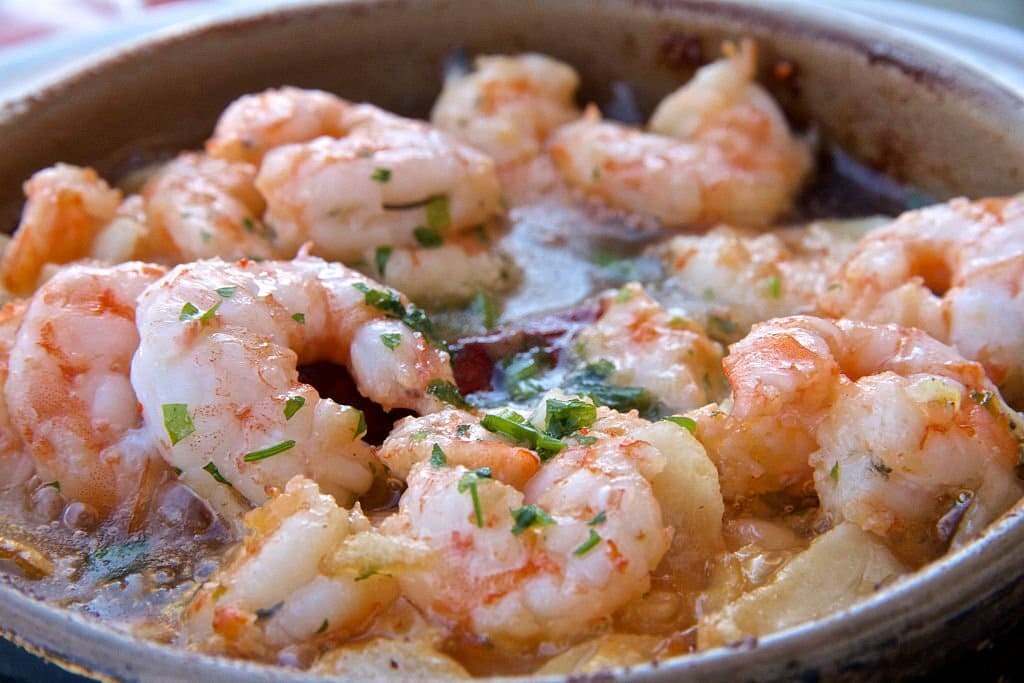Gambas al Ajillo, also known as Spanish Garlic Shrimp, is a beloved dish that has become a staple in the world of Spanish tapas. This delectable recipe combines succulent shrimp, aromatic garlic, and flavorful spices, resulting in a dish that is bursting with Mediterranean flavors. In this article, we will delve into the history of shrimp in Spain, explore the origins of Gambas al Ajillo, discuss popular variations of the dish, and provide you with tips and tricks to make the perfect Spanish garlic shrimp.
Shrimp in Spain: A Culinary Tradition
With its extensive coastline and rich fishing traditions, Spain boasts a diverse array of seafood dishes, and shrimp holds a special place among them. For centuries, shrimp has been a cherished ingredient in Spanish cuisine. Spaniards have long appreciated the delicate sweetness and tender texture of shrimp, incorporating it into various regional recipes. As a result, shrimp in Spain has become an integral part of the country’s culinary tradition, serving as the foundation for the creation of Gambas al Ajillo.
The Origins of Spanish Garlic Shrimp
Gambas al Ajillo originated in the southern coastal regions of Spain, where fresh seafood abounds. This iconic dish showcases the simplicity and elegance of Spanish cuisine. In its traditional form, the recipe calls for sautéing shrimp in olive oil infused with copious amounts of garlic, creating a rich and flavorful base. Over time, Gambas al Ajillo has spread throughout Spain, gaining recognition as one of the country’s most beloved tapas recipes.
Variations on a Classic Dish
While the classic Gambas al Ajillo recipe remains popular, several variations have emerged to cater to diverse palates and regional influences. Some variations incorporate ingredients such as chili peppers and herbs like parsley or cilantro. Others introduce a splash of white wine or sherry for added depth. These variations add subtle nuances and elevate the dish’s flavors while preserving the original recipe’s essence.
Tips and Tricks for Perfect Gambas al Ajillo
To ensure the best flavor and texture, start with fresh, high-quality shrimp. Opt for large, shell-on shrimp, as they are ideal for Spanish Garlic Shrimp. When preparing the dish, sauté the garlic gently in olive oil to release its aromatic oils without burning it. This crucial step is essential for achieving the authentic taste of Spanish Garlic Shrimp. Additionally, adjust the number of red pepper flakes to suit your spice preference, starting with a modest amount and adding more if desired. Remember that shrimp cooks rapidly, so it’s important to be vigilant to avoid overcooking. Once the shrimp turn pink and opaque, they are done. For a visually appealing presentation, serve Gambas al Ajillo sizzling hot in a traditional clay cazuela or a shallow dish. Finally, garnish with fresh parsley to add a vibrant touch to the dish.
Gambas al Ajillo, the classic Spanish garlic shrimp recipe, has stood the test of time and continues to captivate palates around the world. Whether enjoyed as a tapas dish or as part of a larger meal, this mouthwatering creation showcases the simplicity and beauty of Spanish cuisine. With its rich history, versatile variations, and simple yet flavorful preparation, Spanish Garlic Shrimp is a must-try for any seafood lover or fan of Spanish cuisine. Indulge in the delights of this iconic dish and transport yourself to the vibrant streets of Spain with every bite.

Gambas al Ajillo: A Traditional Spanish Recipe
Ingredients
- 1 lb Large shrimp peeled and deveined
- 4 cloves Garlic thinly sliced
- ¼ cup Olive oil
- 1 tbsp Butter
- 1 tsp Smoked paprika
- ⅓ tsp Red pepper flakes (adjust to taste)
- 1 tbsp Lemon juice
- Salt to taste
- Fresh parsley chopped (for garnish)
Instructions
- In a large skillet, heat the olive oil and butter over medium heat until the butter has melted.
- Add the sliced garlic to the skillet and cook for about a minute, stirring constantly, until the garlic is fragrant and just beginning to turn golden brown. Be careful not to burn the garlic.
- Add the shrimp to the skillet and sauté for 2-3 minutes, or until they start to turn pink.
- Sprinkle the smoked paprika, red pepper flakes, and salt over the shrimp. Stir well to coat the shrimp evenly with the spices.
- Continue cooking the shrimp for another 2-3 minutes, or until they are fully cooked through and opaque.
- Remove the skillet from the heat and drizzle the lemon juice over the shrimp. Toss the shrimp gently to combine.
- Transfer the Gambas al Ajillo to a serving dish and garnish with fresh parsley.
- Serve the dish immediately while it's still hot. It's traditionally accompanied by crusty bread for dipping in the flavorful oil.








